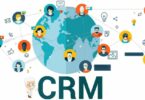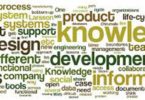Michael Porters Value Chain MCQs with answers:
What is the primary purpose of Michael Porter’s Value Chain framework?
(a) To analyze short-term financial trends.
(b) To evaluate an organization’s overall financial performance.
(c) To develop advertising strategies for new products.
(d) To identify specific activities within a company that create value and contribute to its competitive advantage.
Who developed the concept of the Value Chain?
(a) Kaysha Porter Welsh
(b) Michele Porter Gates
(c) Michael Porter
(d) Nicola Porter
How do support activities contribute to a company’s value chain according to Michael Porter?
(a) They are responsible for all financial transactions.
(b) They provide the necessary resources and infrastructure for primary activities to occur.
(c) They are involved in the marketing and sales processes.
(d) They focus solely on product design and development.
Which of the following accurately describes the primary activities in Michael Porter’s Value Chain model?
(a) These activities support the administrative functions of an organization.
(b) They are non-essential tasks that can be outsourced.
(c) They directly contribute to the creation, production, and delivery of a product or service.
(d) They primarily focus on marketing and sales activities.
How do primary activities differ from support activities in Michael Porter’s Value Chain model?
(a) Primary activities provide administrative support, while support activities are involved in production.
(b) Primary activities contribute directly to value creation, while support activities provide the infrastructure and resources for primary activities to occur.
(c) Primary activities are exclusively focused on marketing and sales, while support activities involve employee management.
(d) Primary activities focus on short-term operational tasks, while support activities emphasise long-term planning.
What role does customer relationship management play in the value chain of financial services?
(a) It has no relevance to the financial services industry.
(b) It is a primary activity that directly creates financial value.
(c) It contributes to the support activities by providing technology and infrastructure.
(d) It enhances the customer experience and influences the competitive advantage of the company.
How does Porter’s Five Forces Analysis contribute to strategic management?
(a) By exclusively focusing on internal factors within an organization.
(b) By providing guidelines for routine employee tasks.
(c) By helping organisations understand the competitive dynamics of their industry and informing them about strategic decisions.
(d) By disregarding the impact of customer preferences on business operations.
Related: Organizational Structure Multiple Choice Quiz
What is the primary focus of the Five Forces framework?
(a) Analyzing a company’s internal strengths and weaknesses.
(b) Identifying potential partners for collaboration.
(c) Creating short-term marketing campaigns.
(d) Evaluating the external factors that influence an industry’s competitive structure and profitability.
How does Michael Porter’s Value Chain strategy contribute to a company’s competitive advantage?
(a) By emphasizing routine operational tasks.
(b) By prioritizing cost-cutting measures across all functions.
(c) By enabling the optimization of value-creating activities and differentiation from competitors.
(d) By exclusively focusing on primary activities.
What is the primary purpose of Porter’s Five Forces Analysis?
(a) To analyze a company’s internal strengths and weaknesses.
(b) To identify potential partners for collaboration.
(c) To evaluate the external factors that influence an industry’s competitive structure and profitability.
(d) To focus solely on short-term financial goals.
Related: Risk analysis and risk management questions
Which of the following is NOT one of the primary categories in Porter’s Value Chain?
(a) Administrative activities
(b) Primary activities
(c) Support activities
(d) Margin activities
What does a Value Chain template help identify in a business context?
(a) Only external threats and opportunities.
(b) Only the organization’s weaknesses and strengths.
(c) The specific activities that contribute to an organization’s competitive advantage and value creation.
(d) The overall market demand for products and services.
In Porter’s Value Chain model, which category of activities involves inbound and outbound logistics, operations, marketing, and sales?
(a) Primary activities
(b) Administrative activities
(c) Support activities
(d) Non-essential activities
Related: Services Marketing MCQ Quiz
What is the primary objective of Porter’s Five Forces industry analysis?
(a) To assess a company’s internal operational efficiency.
(b) To evaluate the financial performance of key industry players.
(c) To understand the competitive dynamics and attractiveness of an industry.
(d) To focus solely on short-term marketing strategies.
How is a Value Chain template typically organized?
(a) It only includes primary activities related to production.
(b) It consists of support activities related to employee training.
(c) It lists various activities in sequential order, including primary and support activities, that collectively create value in an organization.
(d) It focuses solely on marketing and sales activities.
Which of the following is NOT one of the five forces in Michael Porter’s framework?
(a) Bargaining power of suppliers
(b) Threat of new entrants
(c) Competitive rivalry among existing firms
(d) Technological advancements
How might a financial services company apply Michael Porter’s Value Chain analysis to its operations?
(a) By focusing on cost reduction in technology and infrastructure.
(b) By outsourcing all customer-related activities to third-party vendors.
(c) By identifying core financial activities that create value, such as risk assessment and investment strategies.
(d) By disregarding the role of technology in the financial industry.
Related: TQM Questions and Answers
In which book did Porter introduce the concept of the Value Chain?
(a) “Competitive Advantage: Creating and Sustaining Superior Performance”
(b) “Good to Great: Why Some Companies Make the Leap… and Others Don’t”
(c) “The Lean Startup: How Today’s Entrepreneurs Use Continuous Innovation to Create Radically Successful Businesses”
(d) “In Search of Excellence: Lessons from America’s Best-Run Companies”
Which of the following is an example of a primary activity in Michael Porter’s Value Chain?
(a) Procuring raw materials for production.
(b) Conducting employee training programs.
(c) Managing corporate communications.
(d) Implementing financial accounting systems.
Which of the following is a primary activity in Michael Porter’s Value Chain model?
(a) Human resources management
(b) Technology infrastructure
(c) Procurement
(d) Inbound logistics
How do administrative activities fit into Michael Porter’s Value Chain model?
(a) They are the same as primary activities.
(b) They primarily involve employee management and training.
(c) They are part of support activities and include functions like human resources, technology, and procurement.
(d) They are exclusively focused on marketing and sales.
What is the purpose of using Value Chain template?
(a) To create detailed financial reports.
(b) To develop marketing campaigns.
(c) To visually map out and analyze an organization’s primary and support activities that contribute to its competitive advantage.
(d) To design product packaging.






